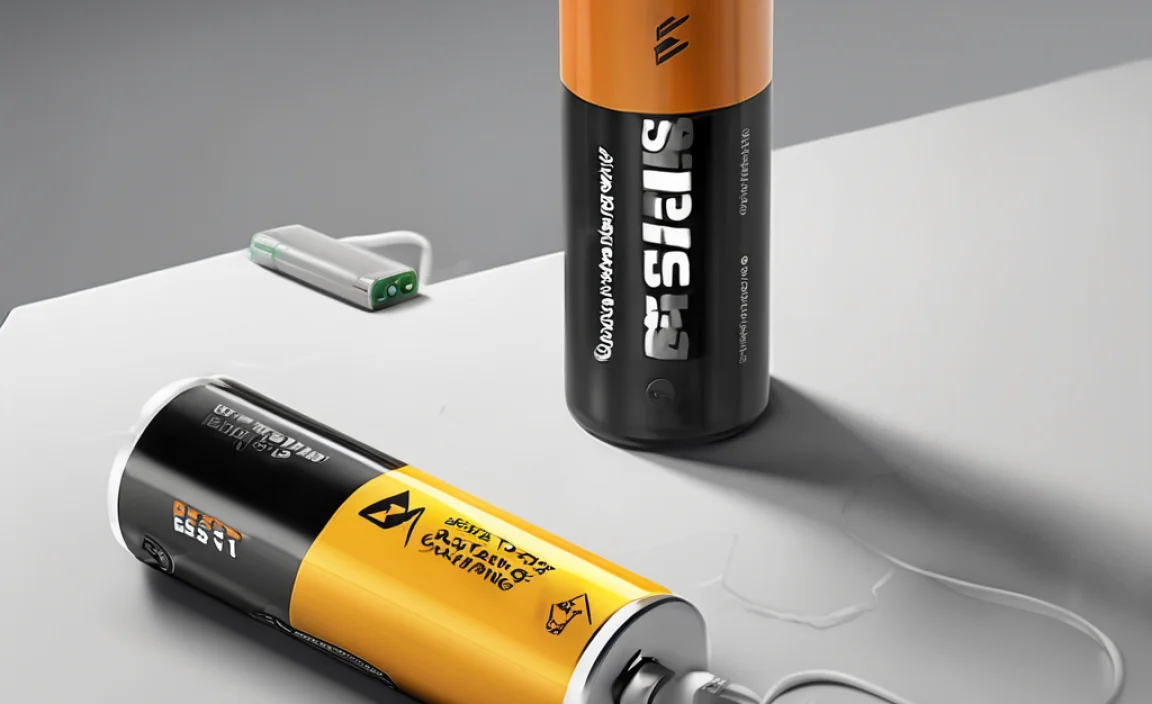Quick Summary:
An adapter for an oxygen sensor is a simple yet crucial upgrade for many vehicles, especially those with modified exhaust systems. It ensures your engine runs efficiently and cleanly by properly housing the oxygen sensor, preventing error codes and potential damage. This guide explains why you might need one and how it works.
Understanding the Adapter for Oxygen Sensor: A Simple Upgrade for Engine Health
Has your check engine light ever come on after a minor exhaust tweak? Or perhaps you’re installing a new performance part and worried about how your oxygen sensor will fit? You’re not alone. Many car owners face these situations, and the solution is often simpler than you think. An adapter for your oxygen sensor is a small but mighty part that can save you headaches and money by ensuring your engine breathes right. Don’t let confusing jargon stop you; we’ll break down exactly why this little adapter is an essential upgrade for your car’s performance and health.
In this guide, we’ll explore what an oxygen sensor adapter is, why it’s so important, and when you might need one. We’ll look at the different types, how they work to keep your car running smoothly, and share some helpful tips. By the end, you’ll understand why this upgrade is a smart move for any driver looking to maintain their car’s optimal performance and avoid annoying warning lights.
What Exactly is an Oxygen Sensor Adapter?
Think of your car’s oxygen sensor’s job. It’s like a tiny detective living in your exhaust pipe, constantly sniffing the exhaust gases. Its main mission is to tell your car’s computer (the ECU) how much oxygen is present. This information is vital for your car to mix the right amount of fuel and air. Too much or too little oxygen means your engine isn’t running efficiently, which can lead to poor gas mileage, increased pollution, and that dreaded check engine light.
An adapter for an oxygen sensor is essentially a small piece of metal that bridges the gap between your exhaust system and the oxygen sensor itself. It screws into a port on your exhaust and provides a precise fitting for the oxygen sensor. This might sound basic, but it ensures the sensor is positioned correctly to get an accurate reading of the exhaust gases. Without it, the sensor might not fit properly, or its readings could be skewed, leading to problems.
Why An Oxygen Sensor Adapter Can Be an Essential Upgrade
In many cases, an adapter isn’t just a convenience; it’s a necessity. Here’s why it’s often considered an essential upgrade:
- Proper Sensor Fitment: Sometimes, aftermarket exhaust components, like performance headers or catalytic converters, have different port sizes or locations for the oxygen sensor compared to stock parts. An adapter ensures a secure and correct fit for your existing sensor.
- Preventing Exhaust Leaks: A loose or improperly fitted oxygen sensor can cause small exhaust leaks. These leaks can affect sensor readings and even damage the sensor over time. An adapter creates a tight seal, preventing these issues.
- Eliminating Check Engine Lights: Modifying your exhaust system often changes the way gases flow. This can trick the oxygen sensor into sending incorrect information to the ECU, triggering a check engine light. Adapters can sometimes help position the sensor in a way that gives more relevant readings, or they are used in conjunction with “fouler” type adapters designed to read less exhaust gas.
- Protecting Sensor Readings: The adapter can sometimes shield the sensor from direct exhaust flow, which might be too harsh for some sensors, especially in high-performance applications. This can extend the life of the sensor.
- Enabling Aftermarket Parts: If you’re upgrading to performance exhaust parts, you’ll often find they don’t come with the necessary threaded port for your factory oxygen sensor. An adapter is the easiest way to add this port.
When Do You Typically Need an Oxygen Sensor Adapter?
You’ll most likely encounter the need for an oxygen sensor adapter in a few common scenarios. Understanding these will help you know if this upgrade is on your radar.
1. Aftermarket Exhaust System Installations
This is perhaps the most frequent reason. When you install performance exhaust headers, a high-flow catalytic converter, or an aftermarket exhaust cat-back system, the O2 sensor ports might be:
- Missing: The new part simply doesn’t have a hole drilled for the O2 sensor.
- Incorrectly Located: The port is present but in a spot that doesn’t provide an accurate exhaust gas sample.
- Different Thread Size: Less common, but some specialized exhaust parts might use a different thread.
In these situations, an adapter is the standard solution. It allows you to add a correctly sized and located threaded port for your sensor onto the new exhaust component. For instance, a common practice involves welding a bung (an adapter fitting) onto the exhaust pipe where you want your O2 sensor to go.
2. Removing or Relocating Catalytic Converters
If you’re working with a modified exhaust setup that involves removing or relocating catalytic converters, you’ll almost certainly need to address the oxygen sensor ports. The O2 sensor located before the catalytic converter (upstream) is crucial for engine management. The sensor after the converter (downstream) is primarily for monitoring converter efficiency. Changes here often require careful management of O2 sensor placement, and adapters play a key role.
3. Wideband Oxygen Sensor Installations
Many performance enthusiasts upgrade to a wideband oxygen sensor system. These are more precise than the factory narrowband sensors. Wideband systems often require a specific type of bung or adapter to be welded into the exhaust to accommodate the larger sensor and ensure accurate readings in a wider air-fuel ratio range. This is crucial for tuning engines for maximum performance and safety.
According to The Engineering Toolbox, accurate measurement of oxygen in exhaust gases is fundamental for optimizing combustion efficiency and controlling emissions. Adapters help achieve this accuracy even with modifications.
4. Troubleshooting Check Engine Lights
Sometimes, a persistent check engine light related to O2 sensor performance (e.g., P0130-P0167 codes) might be related to a sensor that isn’t getting ideal exhaust gas flow. In specific cases, a type of adapter called an “oxygen sensor spacer” or “oxygen sensor extender” is used. This is not a bung welded into the exhaust but rather a small, often bent piece that moves the sensor slightly out of the main exhaust stream. This can trick the sensor into reading slightly less exhaust gas concentration, which may resolve a code related to lean conditions or sensor sensitivity.
It’s important to note that exhaust work and modifications can sometimes affect vehicle emissions compliance. Always check your local regulations regarding emissions equipment. Resources like the EPA’s guide to vehicle maintenance highlight the importance of a properly functioning exhaust system for emissions control.
Types of Oxygen Sensor Adapters
Not all O2 sensor adapters are created equal. The “type” often refers to how it’s installed or its specific function. Here are the most common types:
1. Welded Bungs
These are the most common and versatile adapters. A bung is a threaded fitting, typically made of steel or stainless steel, that is welded directly onto your exhaust pipe or manifold. Once welded in place, it provides a standard threaded port (usually M18x1.5, which is common for most O2 sensors) where you can screw in your oxygen sensor.
- Pros: Permanent, secure, allows precise placement, can be added almost anywhere on the exhaust.
- Cons: Requires welding expertise and equipment, irreversible modification to the exhaust.
2. Bolt-On Adapters (Less Common for Direct Sensor Fitment)
While less common for directly housing the sensor itself, some exhaust flex pipes or adapter sections might come with integrated bungs that are bolted on. More often, bolt-on components in exhaust systems are for connecting different pipe sections. For O2 sensors, a welded bung is overwhelmingly the preferred “permanent” solution.
3. Oxygen Sensor Spacers/Extenders
These are physically small adapters that screw between the exhaust bung (the hole in your exhaust pipe) and the oxygen sensor itself. They are not welded on. They essentially move the sensor tip slightly away from the direct exhaust stream. They often have a small amount of honeycomb material or a carefully sized opening inside to restrict exhaust gas flow to the sensor.
- Pros: Easy to install and remove, no welding required, affordable.
- Cons: Primarily a temporary fix or for specific code-clearing purposes, may not provide accurate readings for engine tuning, can sometimes fail to resolve the underlying issue.
4. Wideband Sensor Adapters
These are typically specific bungs designed for the larger diameter and different sensing technology of wideband O2 sensors. They are almost always welded bungs, as they need to be robust and precisely placed for accurate wideband readings. Sometimes, a bung will have a specific angle or depth to ensure the sensor is in the optimal exhaust stream.
5. “Anti-Foulers” or “Oxygen Sensor Simulators”
Similar to spacers, these are often small metal pieces that thread onto the O2 sensor itself or screw into the bung. Their primary purpose is to limit the amount of exhaust gas that reaches the sensor without completely blocking it. This is often used for secondary (downstream) O2 sensors when a catalytic converter is removed or modified, to prevent the “catalyst efficiency” codes. They are not generally recommended for primary (upstream) sensors controlling the air-fuel mixture, as they interfere with critical engine management data.
How Oxygen Sensor Adapters Work to Improve Engine Performance
The primary goal of any O2 sensor adapter is to ensure the oxygen sensor can function correctly and provide accurate data to your car’s Engine Control Unit (ECU). When this happens, the benefits ripple through your engine’s operation.
Ensuring Proper Air-Fuel Mixture
The ECU constantly adjusts the amount of fuel injected into the engine based on the oxygen sensor’s readings. If the sensor is poorly positioned, leaking, or not reading representative exhaust gases, the ECU might incorrectly assume the engine is running too rich (too much fuel) or too lean (not enough fuel).
- Lean Mixture: Not enough fuel. Can cause misfires, detonation (engine knocking), overheating, and damage to pistons.
- Rich Mixture: Too much fuel. Wastes fuel, reduces fuel economy, can foul spark plugs, and damage catalytic converters.
An adapter that correctly positions the sensor ensures it receives a true sample of the exhaust. This allows the ECU to maintain the optimal air-fuel ratio (typically around 14.7:1 for gasoline engines), leading to:
- Smoother engine operation
- Better fuel efficiency
- Reduced emissions
- Optimal engine power
Preventing False Readings
Exhaust systems are dynamic environments. Changes in flow, pressure, and temperature can affect sensor readings. An adapter can:
- Stabilize Readings: By ensuring the sensor is in a consistent location, it reduces the chance of it being affected by turbulent exhaust flow.
- Prevent Leaks: A secure fit prevents exhaust gases from escaping near the sensor, which could skew its readings or even affect the sensor’s lifespan.
Facilitating Diagnostic Accuracy
When an adapter is used correctly, it helps maintain the diagnostic integrity of the O2 sensor system. This means that if a check engine light does come on, the codes generated are more likely to point to a genuine problem with the sensor, its wiring, or another engine component, rather than an installation or fitment issue caused by aftermarket parts.
Pros and Cons of Using an Oxygen Sensor Adapter
Like any automotive modification or part, an oxygen sensor adapter has its advantages and disadvantages. Weighing these will help you decide if it’s the right solution for your needs.
Pros:
- Enables Installation of Aftermarket Parts: Crucial for fitting performance exhaust systems or manifolds that lack the necessary O2 sensor bung.
- Correct Sensor Placement: Ensures the O2 sensor is in the optimal position for accurate readings.
- Prevents Exhaust Leaks: A properly installed adapter seals the O2 sensor port effectively.
- Can Help Clear Codes: Specific types of adapters (spacers/extenders) can resolve certain O2 sensor-related check engine lights, especially P0420/P0430 (catalyst inefficiency).
- Protects Sensor and Engine: Ensures correct air-fuel ratios, preventing potential engine damage from lean conditions or rich mixtures.
- Cost-Effective Solution: Generally much cheaper than replacing an entire exhaust system just to add an O2 sensor port.
Cons:
- Requires Welding (for Bungs): Welded bungs need professional installation or skilled DIY work.
- Potential for Incorrect Installation: If a bung is welded in the wrong spot or angle, it can lead to inaccurate readings.
- Can Mask Underlying Issues: Spacers/extenders might clear a code without fixing the root cause, potentially leading to bigger problems later.
- Compatibility Concerns: Ensuring the adapter’s thread size and type match both the exhaust and the O2 sensor is vital.
- May Affect Emissions Testing: Depending on the type of adapter and its purpose (especially with spacers/simulators), it might cause issues during emissions inspections if the system is designed to detect catalytic converter efficiency.
It’s important to understand that while adapters can solve fitment issues and sometimes clear codes, they are tools. Their effectiveness depends entirely on the specific application and whether they are used to facilitate proper function or to circumvent a system. Always use them in accordance with common practice and for their intended purpose.
Choosing the Right Oxygen Sensor Adapter
With various types available, selecting the correct adapter is key. Here’s how to make the right choice:
1. Identify Your Need:
- Are you adding new exhaust parts? If so, you likely need a welded bung to create a new port.
- Are you trying to clear a specific check engine light (like P0420/P0430)? A spacer or extender might be a temporary, non-welded solution.
- Are you installing a wideband O2 sensor? You’ll need a specific wideband bung.
2. Determine the Type of Sensor:
- Narrowband vs. Wideband: Factory O2 sensors are usually narrowband. Performance or tuning applications often use wideband sensors. Wideband sensors are typically larger and require specific bungs.
- Sensor Thread Size: Most O2 sensors use an M18x1.5 thread. However, always confirm the threads on your specific sensor and the bung you are buying.
3. Consider Installation Method:
- Can you weld? If yes, a welded bung offers the most permanent and reliable solution.
- Are you looking for a quick, non-permanent fix? A universal spacer or extender might be suitable, but understand its limitations.
4. Material Matters:
- Stainless Steel: Highly durable, corrosion-resistant, and ideal for exhaust components.
- Steel: Less expensive but more prone to rust over time, especially in harsh environments.
Table: Common O2 Sensor Adapter Types and Their Uses
| Adapter Type | Primary Use | Installation | Key Features |
|---|---|---|---|
| Welded Bung | Creating O2 sensor ports on custom/aftermarket exhausts | Welding required | Permanent, secure, versatile placement |
| Oxygen Sensor Spacer/Extender | Clearing certain O2 sensor codes (e.g., P0420/P0430) | Screw-on, no welding | Non-permanent, easy to install, restricts gas flow |
| Wideband Bung | Installing wideband O2 sensors (for tuning) | Welding required | Specifically sized for wideband sensors, precise placement |
| “Anti-Fouler” / Simulator | Preventing O2 sensor codes after catalytic converter removal | Screw-on to sensor or bung | Limits exhaust gas exposure, can mask issues |
Where to Buy
You can find oxygen sensor adapters at:
- Auto Parts Stores: Many carry universal bungs and common spacers.
- Online Retailers: Websites like Amazon, eBay, or specialized performance parts stores offer a wider selection, including specific wideband bungs and high-quality stainless steel options.
- Performance Tuning Shops: These shops can often supply and install custom bungs or recommend specific solutions for performance builds.






